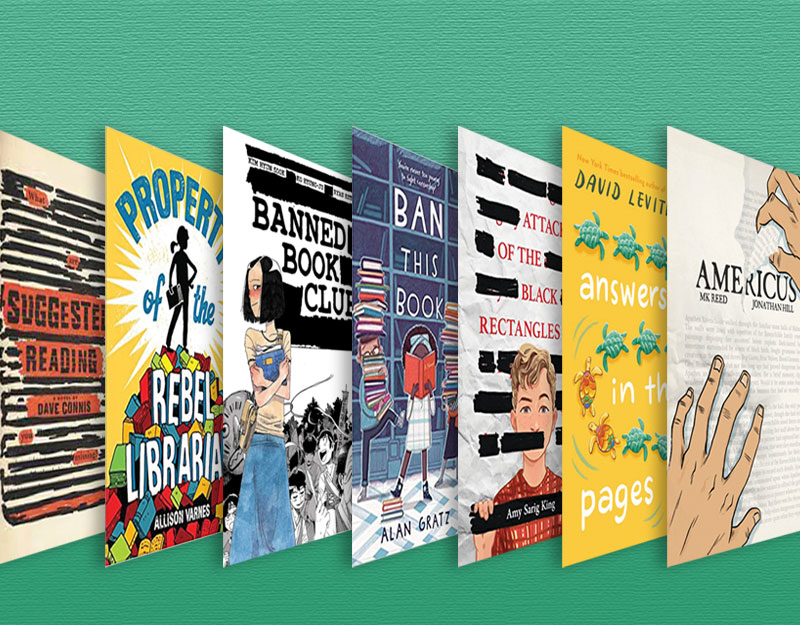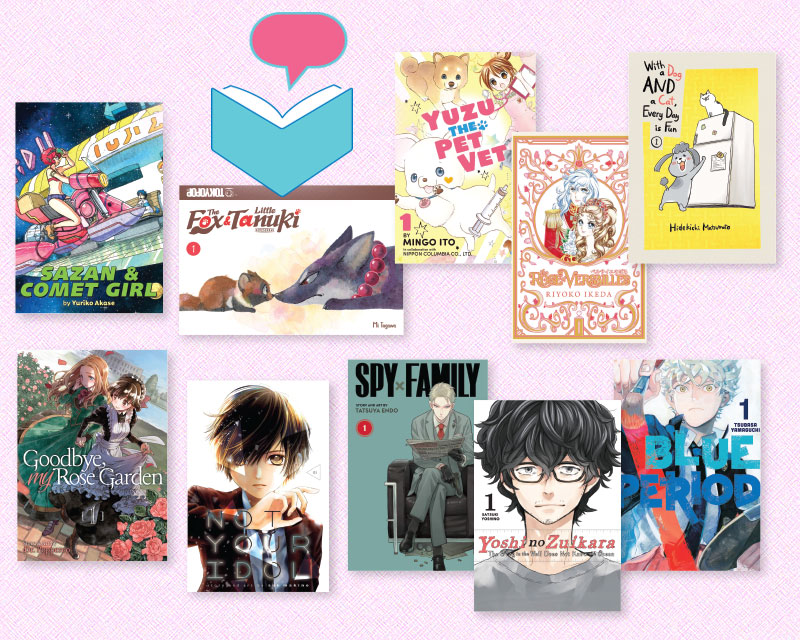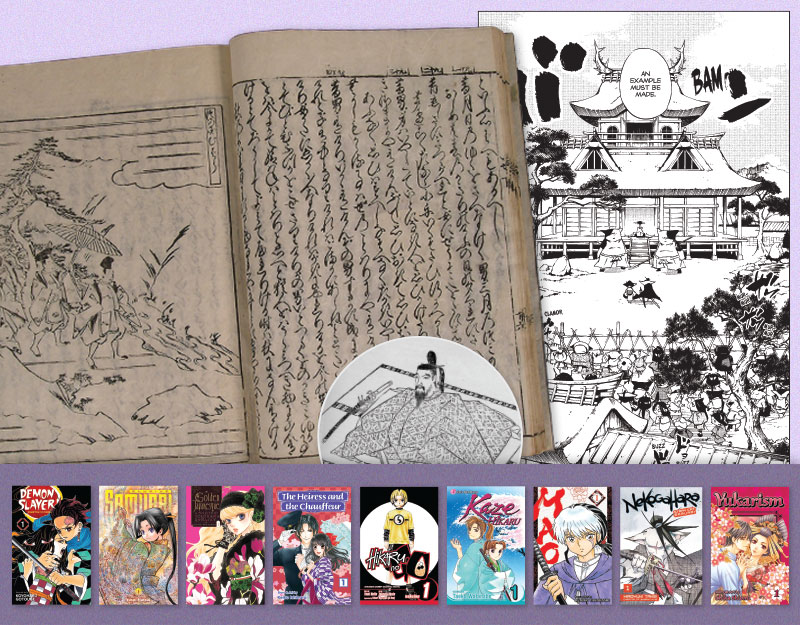Keeping your manga collection current
Yesterday, Brigid Alverson, Robin Brenner, Esther Keller, Eva Volin, Snow Wildsmith, and I participated in a panel discussion at the ALA’s annual conference. Called “Good Comics for Kids,” the presentation focused on how to create a graphic novel collection for young readers: what to buy, how to organize the collection, and how to develop effective collection policies. During the subsequent discussion, one librarian posed a question that’s been on a lot of folks’ minds lately: are fewer teens reading manga? She noted declining interest in her manga collection and wondered about the possible causes.
The abundance of scans and scanlations (pirated copies of licensed manga) is certainly a factor; for teens eager to stay current with ongoing series, scanlation aggregators are an attractive alternative to the library, as the biggest sites offer a greater variety of titles than any community or school could hope to collect. Yet the robust traffic at pirate sites such as MangaFox and OneManga suggests that teens are still reading manga in large numbers. So how do you draw them back to your library? Our panelists had a few suggestions:
ADVERTISEMENT
ADVERTISEMENT
1. Stay current with ongoing series.
If your library is collecting a series with forty or fifty volumes, and you only have the first ten or fifteen, fans will go elsewhere to find the books they want. If budget constraints prevent you from collecting as many series as you’d like, focus on staying up-to-date with your best-performing titles. And if a series seems to have disappeared off the radar screen, check Anime News Network or MangaBlog for more information about the series’ status; publishers will often put under-performing titles on slower release schedules.
2. When you finish collecting a complete series, find a new title to collect.
Manga is like any other popular medium: some series will be perennial favorites, finding an audience with each new generation of readers, while others will enjoy a brief moment of popularity before fading into obscurity. Use the ending of one series as an opportunity to refresh your collection by picking up a new title.
3. Stay current with popular culture.
It’s important to remember that kids and teens’ interest in manga may have very little to do with the medium itself; for every die-hard fan who will read anything in manga format, there are two readers who are primarily interested in genres, and will consume their favorite type of story in a variety of media: video games, novels, television shows, movies, online fan fiction. Moreover, popular genres go in boom-and-bust cycles, with zombie horror stories proving popular one year and Mean Girls knock-offs abounding the next. Consider the ubiquity of vampires right now: it’s a sure bet that many of the teens visiting your library are interested in Twilight, True Blood, and The Vampire Diaries. Why not cater to their interest by adding the Twilight manga to your collection, or series such as Bloody Kiss, Chibi Vampire, Cirque du Freak, COWA!, Nightschool, The Record of a Fallen Vampire, Rosario + Vampire, Vampire Hunter D, and Vampire Knight?
4. Keep tabs on what teens are buying.
For much of the 2000s, Tokyopop and VIZ dominated the American manga market with teen-oriented fare such as Cardcaptor Sakura, Dragonball, Fruits Basket, Fushigi Yugi, and InuYasha. Check the NY Times Graphic Books Bestseller List, however, and you’ll notice a subtle shift in the publishing landscape: Yen Press is routinely competing with VIZ for dominance of the sales charts. The NY Times manga list isn’t a perfect measure of a series’ popularity, but it does give a useful picture of what titles are selling well in bookstores — the very place where most teens buy manga. If your purchasing habits are confined to established players such as Dark Horse, Del Rey, Tokyopop, and VIZ, it’s time to add Yen Press to your list as well; titles like Black Butler, Kobato, Maximum Ride, The Melancholy of Haruhi Suzumiya, Nabari no Ou, Nightschool, and Soul Eater have all been very strong performers.
Another good source of information about what teens are reading are Deb Aoki’s annual Best Manga polls, which generate a strong response from teen voters. Of particular interest to librarians who work with younger readers are her Best Shonen Manga, Best Shojo Manga, and Best Children’s Manga categories.
5. Don’t overlook smaller publishers.
Though best-known in the US for their handsomely produced editions of Osamu Tezuka’s Black Jack, Buddha, and Ode to Kirihito, Vertical Inc.’s 2010 line-up includes two titles that are great for younger readers: Chi’s Sweet Home, an all-ages manga about a kitten and the family that rescues her, and Twin Spica, a tween- and teen-friendly series about a young girl who dreams of becoming an astronaut. UDON Entertainment is another company that’s publishing titles for grade school readers; their UDON Kids manga (The Big Adventures of Majoko, Fairy Idol Kanon, Ninja Baseball Kyuma!, and Swans in Space) are specifically written for readers in grades 2-5.
* * * * *
None of these strategies are guaranteed to boost your circulation figures through the roof, but taken as a whole, they are an essential component of any long-term plan for building and maintaining a successful manga collection. N.B. For librarians who were unable to attend our panel, the ALSC will be posting an electronic version of the handout from “Good Comics for Kids: Building a Graphic Novel Collection for Younger Readers” on its website shortly. Stay tuned for the link.
Filed under: Manga, Uncategorized
About Katherine Dacey
Katherine Dacey has been reviewing comics since 2006. From 2007 to 2008, she was the Senior Manga Editor at PopCultureShock, a site covering all aspects of the entertainment industry from comics to video games. In 2009, she launched The Manga Critic, where she focuses primarily on Japanese comics and novels in translation. Katherine lives and works in the Greater Boston area, and is a musicologist by training.
ADVERTISEMENT
ADVERTISEMENT
SLJ Blog Network
The Moral Dilemma of THE MONSTER AT THE END OF THIS BOOK
Cover Reveal and Q&A: The One and Only Googoosh with Azadeh Westergaard
Fighting Public School Book Bans with the Civil Rights Act
ADVERTISEMENT








I hope you don’t mind if I pipe in with a tangential piece of advice – TELL people. It does no good at all to have a great GN section, but bury it deep in the back corner where no one can see it!
Have someone talk about it, or run anime showing in conjunction with it. Bring in a guest lecturer…have a “bring your favorite manga” show and tell, whatever – do something to get the word out.
Not at all, Erica — that’s a great point, and something that the librarian panelists emphasized during our ALA presentation. Word of mouth is essential, especially for readers who might not realize that libraries actively collect graphic novels. Thanks for the suggestions!
My library has a pretty decent graphic novel collection, and a lot of what I can’t find on the shelf I can have sent over from another branch. But just the other day I realized how easy it is to request books that the library doesn’t have! It’s advice I’ve heard before, but when I actually went to my library’s website and submitted a request form for volume one of Twin Spica, I got a response a day or so later and discovered that my library had approved my request and ordered four copies to share between its branches. So there’s my advice to any non-librarians reading this post—request stuff! It really works! 😀